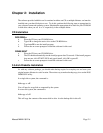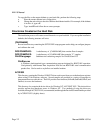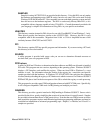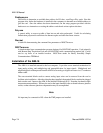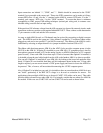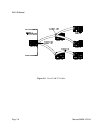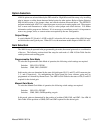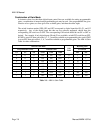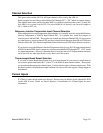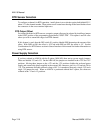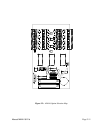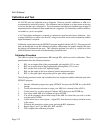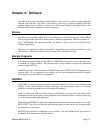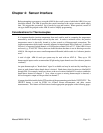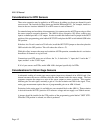
Page 2-9
Manual MAIM-16.D1d
Channel Selection
This option selects which AD12-8 A/D input channel will be used by the AIM-16.
Install a jumper in a one of the positions labeled OV0 through OV7. ("OV" stands for output voltage.)
This channel must not be used by any other AIM-16, or reference junction in the system. Usually, the
first AIM-16 in a system is set to OV0. If a second AIM-16 is to be used, you can set it's jumper to
OV1, a third to OV2, etc.
Reference Junction Temperature Input Channel Selection
When making thermocouple temperature measurements, it is normally desired to assign the Reference
Junction Temperature to AIM-16 Input Channel IN0. To configure this, install two jumpers in
selection points labeled TMP. These points are located near the Input Channel IN0. Do not connect
any other input or sensor to channel IN0, and do not install break-detection shorts B0 or RTD Sensor
Selection shorts R0. (See Thermocouple Break Detect Selection and RTD Sensor Selection sections.)
If you desire to assign the Reference Junction Temperature directly to an AD12-8 input channel instead
of AIM-16 channel IN0, install a jumper in a selection point labelled OT0 through OT7. ("OT" stands
for output temperature.) However, remember that if you do this, this AD12-8 input channel used must
not be used for any other input by this or any other card in the system.
Thermocouple Break Detect Selection
If you wish to use the break-detect feature for a given input channel it is necessary to install shorts in
two selection points both labeled B"n", where "n" is the AIM-16 input channel number. These points
are located near the appropriate channel input. Use this selection only for thermocouple inputs. With
the shorts installed, an open thermocouple condition will cause a full-scale negative voltage output on
that channel.
Current Inputs
If 4-20mA or other current inputs are to be used. Resistors may be added to points labeled IR1-IR16
on the AIM-16 card. Please see Sensor Interface, Considerations for Current Inputs for more
information.



